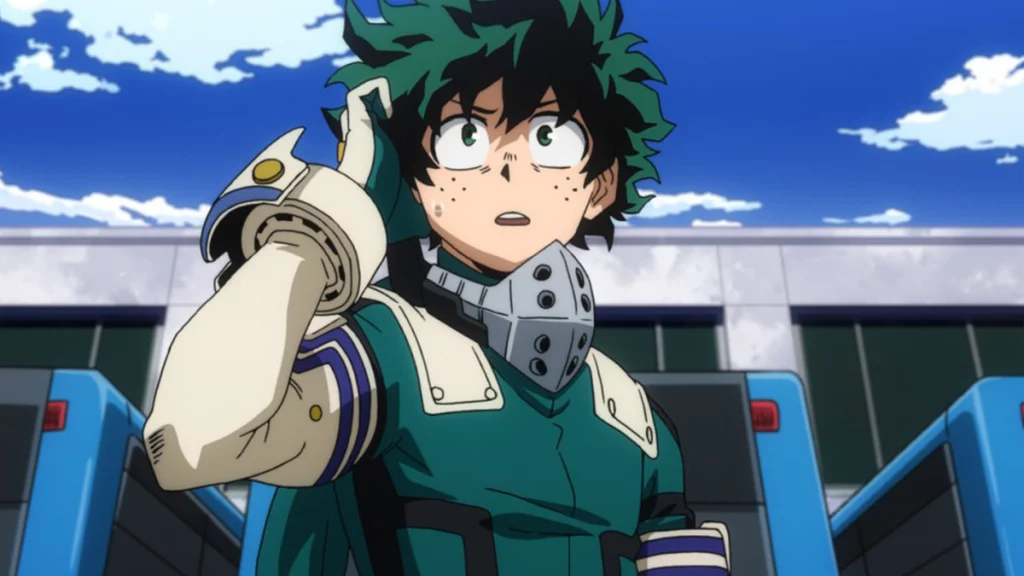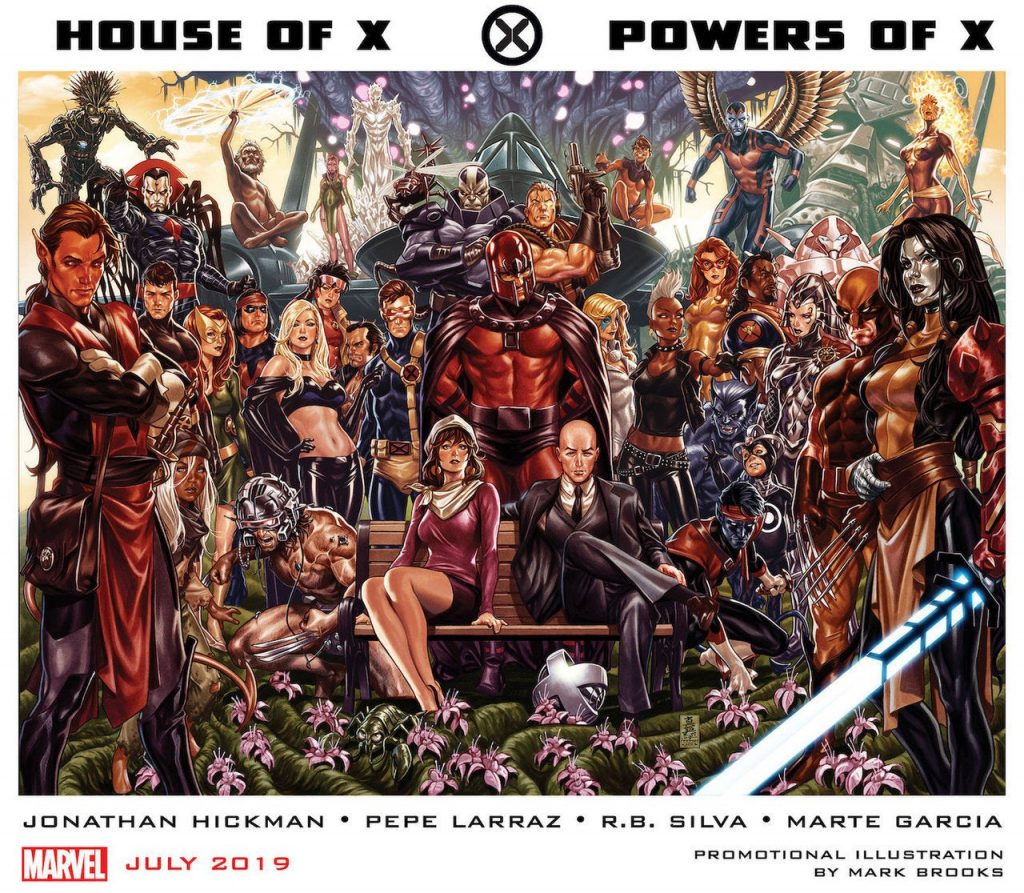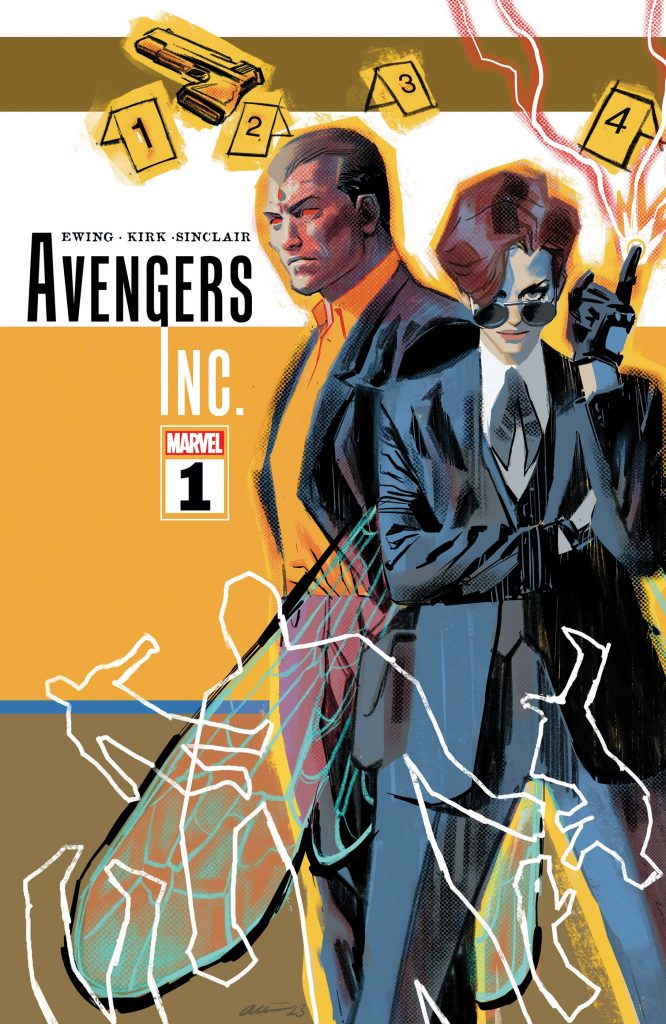Comics Are Still Good. But Are They Missing Something Else?
Is it more valuable for a comic to be good or important?
There has been a constant conversation of late about what ails the direct market, with much of the handwringing focusing on the Big Two of DC and Marvel. It’s generated endless discussions, with every social network, private forum, and convention bar hosting unplanned symposiums on the topic. Naturally, everyone has their own pet theories as to what is really going on.
Some swear by the idea that it’s the lack of sales charts creating the problem. If we knew what was or wasn’t selling, it would be a path to resolution, or so the hypothesis goes. Others blame rising cover prices, or any number of other monetary elements. Those costs, both for readers and retailers, are leading to sinking sales and orders respectively. Of course, there’s the cadre of commenters who insist it’s the progressive approach of creators and publishers putting a cap on interest. That’s their boilerplate argument against everything, though, which makes them impossible to take seriously. The point is, though, that everyone has a take, and they aren’t afraid to share it.
In reality, what’s creating this challenging environment for the direct market is much more than any one thing, no matter how much people want to boil it down to a single item. The health of the economy and its perception. Waning foot traffic, especially in shops located in the heart of major cities. The endless stories everyone can engage in across any number of mediums and platforms, including a bevy of superhero films, shows, video games, and beyond. The trouble with metadata. Disinterest in the single-issue format. The current state of comics marketing. The crushing number of comics and publishers vying for our attention. Too many variants. The potential factors are practically limitless. Add it all up, though, and that’s how you end up with major headwinds facing comics retail.
And yet, it feels as if one idea has taken the lead of late, at least to some degree. It’s a pretty simple one, a premise perhaps best stated by ICv2’s Milton Griepp in a recent piece titled “Can Comics Be Saved?” In it, the former head of Capital City Distribution 1 turned journalist said, “I think there’s a very general reason why Marvels and DCs aren’t selling: they aren’t very good.”
Griepp’s not the only one who has suggested this, of course. That idea has been proposed by any number of people, 2 and I’ve even written about how some shops have reported that customers believe this to be true. It’s also not just limited to the Big Two. There seems to be a pervasive belief that at least as far as direct market comics are concerned, the quality just isn’t there. And you know what?
I don’t think that’s true.
Or, I should say, I don’t think that’s the entire truth.
There are a couple reasons for that. One is that I read a lot of comics and can verify that comics are actually quite good these days, even those from DC and Marvel! There are bad ones too, as is always the case. But overall quality is at a pretty solid level, both in single-issues and beyond. The other is that if the merit of the work was the reason, then first issues would likely be doing better than they are. While attrition — or how sales decrease after number one and beyond — is arguably still a bigger pain point for shops, getting customers to even pick up a debut can be a major challenge, to say nothing of whether retailers will order it. And if no one has even read the comic before turning on it, it seems unlikely that merit is the reason for a title struggling — even if perceived quality can have an area of effect on whether new titles are picked up.
Going back to something I said earlier, this environment was almost certainly created by an assortment of factors. It’s a complicated issue that is often treated as a simple one. And a good example of that complexity comes from my assertion that the “comics aren’t good these days” take isn’t entirely true. That’s because even the very idea of quality isn’t as easy as a binary “this is good/bad” for your average single-issue comic fan. The truth is, that cohort’s idea of quality can be less about the art, writing, or anything related to craft as much as it is, “This story matters.”
While I would say that many comics, including plenty of the Big Two’s releases, are good, the direct market’s publishers may have inadvertently created a perception that their own comics do not matter in the way that many fans of the medium care about. That might be even more damning in their eyes. For stalwarts of the single issue — particularly DC and Marvel supporters — sometimes good doesn’t even mean good. It’s whether the story is “important” or if it “means something” in the grand scheme of things. If you don’t “matter,” you’re nothing in the eyes of some readers.
And that’s a much more difficult perception to overcome.
Even worse, this is a natural result of decisions made by direct market publishers over the past 12 years. While it all arguably started with the series of relaunches that began at the Big Two with DC’s The New 52 in 2011 — each of which created a break in the rhythms of readers and generated jumping off points in the process 3 — it’s been exacerbated by another trend that started towards the end of the past decade: the shift away from ongoings towards intentional or accidental finite series.
I’ve written about this several times the past few years, starting back in February 2020 when I explored how publishers had embraced finite series as not just a viable option but a preferred flavor, despite previous industry consensus being that minis just don’t sell. And it seemed to be working for them at that point, both because some titles popped in a major way and because these finite releases offer a quicker path back to a new number one — the only thing everyone knows they can sell. 4 The problem is, this trend resulted in an overcorrection, one in which shorter turn titles became the dominant flavor for all publishers to a previously inconceivable degree.
Take this release week 5 as an example. By my count, there are 78 total single-issue releases. Of those, 32 — or 41% — are explicitly miniseries or one-shots, while 64 — a staggering 82% — are just five issues in or fewer. You have to include those younger titles in the mix because very little lasts these days. Just ask Al Ewing and Leonard Kirk’s Avengers Inc., a sister series to the main Avengers book that couldn’t even make it past five issues despite the glitzy names on its cover. Every title seems to either be a planned miniseries or a comic that’s just waiting to become one due to poor sales.
And thanks to the constant relaunches of the 2010s and this finite series trend, fans of single-issue comics have been implicitly told two things. One is that none of these comics “matter,” in the way that comic fans mean the phrase, 6 so why bother reading them at all. And the second is that if you are interested, you can just buy the first issue (or not) to sample the series and then wait to read the complete story in a collection or on DC or Marvel’s all-you-can-eat subscription apps if you enjoy it. Even if you do like what you find, that may well not happen because readers often forget titles exist between the arrival of the first issue and a trade — despite their best intentions. 7
In some ways, it feels as if the abandonment of the ongoing as a key direct market ingredient has created a nihilist viewpoint amongst readers, one where they see the bulk of releases as inessential at best and “filler” at their most petty. That’s why it’s not as simple as just, “These comics aren’t good.” It’s at least in part, “This doesn’t matter; therefore it lacks value.” 8
Many held a belief that long-running titles created a barrier to entry for potential fans, 9 and that things needed to be simplified to generate jumping on points. When it was 80% ongoings and 20% minis/one-shots, some thought this ratio created few opportunities to onboard new readers. Something had to change. It did. The script has been completely flipped. And instead of solving the problem, this shift may have just created another on top of it.
The funniest part about this is that this trend has taken hold at the same time manga went through a boom. Now, I’m not going to tell you that what I’m about to say is the reason that explosion happened. Like with the recent downturn for single-issue comics, there are a plethora of factors fueling manga’s success. But do you know what manga offers these days that Western comics mostly do not?
Long-running stories, ones where everything matters no matter how extended the journey is.

Case in point. My wife has been watching a ton of anime on Crunchyroll of late, and one series she took to in particular was My Hero Academia. That series is, in its simplest form, the X-Men from a different point of view, as it follows a bunch of young superheroes-in-training as they go through varying trials and tribulations. I didn’t watch the entire series with her, but occasionally, I would catch a bit and ask questions about what was happening. One such instance was a beat in season six where in the middle of a giant fight, the show cut to a training scene. I asked my wife who this one character was, and to my surprise, it was the lead, Izuku Midoriya, just with much different hair. The show was contextualizing the events of this giant fight in season six through something that happened in the beginning of the story.
You know, sort of like long-lasting ongoings would do, back when they were de rigueur for direct market comics. I’m not saying this is why manga and anime are so popular, 10 but we’re in a binge era, one where people will watch even middling shows like Suits simply because there’s a lot of it. Longevity is now a feature, not a bug, 11 and direct market comics effectively abandoned that approach just as that idea was taking hold. In this very specific way, manga is beating superhero comics at its own game. It’s thriving with long-form stories while the direct market falls down a hole of short runs people aren’t invested in.
And the weird thing is, it seems like decision makers have some level of data — albeit from a different format — that states readers do in fact want longer stories. Marvel’s Senior VP of Publishing and Executive Editor Tom Brevoort answered a question in his newsletter about the Avengers United Infinity Comic on the Marvel Unlimited app, where he said that “the analytics we were shown indicate clearly that longer stories are more likely to capture and retain readers.” 12 That’s why Marvel had just launched a 25-part story in that series. It’s what readers want.
Of course, that’s digital and we’re talking print comics, so it’s a bird of a different feather. But how often are comics even given a chance to find an audience these days, let alone 25 issues to tell a story? Would something like Al Ewing and Joe Bennett’s Immortal Hulk have gotten enough runway to become the hit it proved to be when it took 15 issues for its ascent to begin? Could Robert Kirkman, Cory Walker, and Ryan Ottley’s Invincible have made it far enough to become the sprawling superhero epic it’s known as now? Quite possibly in both cases, because the former was never in dire shape while the latter was something Kirkman believed in. But it was also a much different market at those times, and as I’ve said before, comics are in some ways a faith-based system. Readers just don’t seem to believe comics will last very long these days. So, why get invested?
Brevoort even admitted that the ongoing form is devalued, at least to some degree, in his most recent newsletter. When asked whether minis will be more heavily featured in the future, Brevoort said, “Limited series are already more prevalent than they’ve been in the past. But today, ongoing series doesn’t quite mean what it once did, when you could feel guaranteed to get a run of a decent length out of it.” While this is true and having an ongoing sustain sales in today’s market is clearly difficult, it’s also hard to not look at the events of the past decade or so as the varying direct market publishers creating that very environment through their choices.

That’s not to say that simply making everything an ongoing would cure all the ills of the direct market, or that they are better or more likely to succeed than the alternative. While some of the biggest successes in the past four years of the direct market — the Krakoa Era of the X-Men, Tom Taylor and Bruno Redondo’s Nightwing, James Tynion IV and Werther Dell’Edera’s Something is Killing the Children (and associated titles), and even the burgeoning Energon Universe and its promise of a larger shared universe — are the ones that have been given enough space to succeed, there’s a lot of chicken or the egg to that premise. Have they lasted because they’re successes or did they become successes because they were allowed to last? That’s difficult to disentangle, but it’s undeniable that the rope for comics is shorter than at any point in recent memory.
This all reminds me of something writer Rick Remender posted on Instagram a while back. Remender was responding to this larger discussion, and how many were focusing on how a first issue sold as the determinant of success for comics. While his emphasis was on creator-owned comics, his larger point was simple: “books with longevity” that are given the space to tell their story are what “continue to sell,” and will do so forever. In short, we shouldn’t just be looking at #1. Remender’s take was “The gauge of success is the entire series.” He’s not wrong. Or, he shouldn’t be, at least.
These days, though, the very idea of an “entire series” is a fleeting one. Even the sturdiest of concepts rarely last long, and that’s across all publishers and genres. It rarely matters if a single-issue comic is great. The often-ephemeral nature of these titles gives readers little to hold onto, to say nothing of the pervasive skepticism that these stories don’t “matter” anymore. That’s a real problem. Again, this isn’t saying that simply making everything an ongoing will solve the issues that face the direct market. There’s no silver bullet answer. It’s a much more complex problem than any one issue, whether people want to believe that or not. But finding a better balance could prove beneficial, and in the process, it might help remind readers why these stories mattered to begin with.
One of the main comic distributors before Diamond Comic Distributors acquired it in 1996.↩
Some of whom are, frankly, questionably motivated at best or outright bad actors at worst.↩
Even if they did bolster orders as well for a time.↩
Or at least they did then!↩
With the official ship date of December 6, 2023.↩
i.e. It is essential to the story.↩
I know this one from experience.↩
I just want to note: I do not believe this to the same degree as others. While something being a shorter series might mean I wait for trade or read it on one of the aforementioned apps later, that isn’t a qualitative judgment as much as one about electing my preferred format to experience a series.↩
One example: How do you know where to start when a title like Detective Comics is over 1,000 issues in?↩
Especially considering the fact that plenty of bookstores and comic shops struggle to sell the non-superstar manga titles past the first few volumes.↩
Unless you’re a streaming service with an overzealous algorithm.↩
Insert Russell Westbrook’s “Ahhh that’s pretty interesting!” line here.↩

